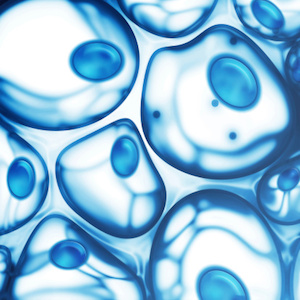blog
April 7, 2014 | Source: Rapid Micro Biosystems, Inc.
Working with Unusual Sample Types: Breaking Down Organic Materials
POSTED BY Rapid Micro Biosystems | 3 minute read
April 7, 2014 | Source: Rapid Micro Biosystems, Inc.
POSTED BY Rapid Micro Biosystems | 3 minute read
 Microbiologists often have to contend with cumbersome materials for bioburden and sterility tests. Most products must be diluted and filtered to allow for effective and efficient testing. Many pharmaceutical products contain materials that are difficult to break down and pass through a standard 0.45 micro filter.
Microbiologists often have to contend with cumbersome materials for bioburden and sterility tests. Most products must be diluted and filtered to allow for effective and efficient testing. Many pharmaceutical products contain materials that are difficult to break down and pass through a standard 0.45 micro filter.
Still, there are techniques available for quality control workers prepare samples that could not be traditionally filtered. In the last installment of this series, we discussed a few fixes for solubilizing the materials in capsules, creams and particulates. This time, we'll cover a few techniques to prepare sample such as mammalian cell culture and tissue samples for filtration. By using filtration, larger sample sizes of these materials can be tested than possible using other methods such as spread plating, improving accuracy and lowering limit of detection for contaminants. In addition, filtration opens the door to taking advantage of a wider variety of automated growth-based rapid micro methods.
Enzyme treatments can be useful in handling the live mammalian cell cultures used to produce biological therapeutics. When fluid samples are drawn from batch fermenters at high concentrations, the intact cell and protein by-products will easily clog standard filters. With the right enzyme treatments, however, mammalian cells and protein by-products can be dissolved and filtered while leaving bacterial cells intact
Harvested tissue samples must be tested to determine levels of bioburden prior to use. These materials cannot be sufficiently processed to allow filtration. In this case, microbiologists can let contaminants “come to them” by first incubating the tissue samples themselves in liquid growth media. If present, contaminating microbes will grow out from those tissues into the liquid growth media, from which they can then be filtered, plated and incubated. The rest of the process would follow traditional incubation and enumeration procedures.
Taking advantage of these procedures can allow unfilterable materials to be processed and tested via membrane filtration. Beyond the benefits of larger samples and lowering limits of detection, these methods open the opportunity to leverage a wider range of automated, growth based RMM technologies. To learn more about the benefits of automated compendial testing, download our free guide today!